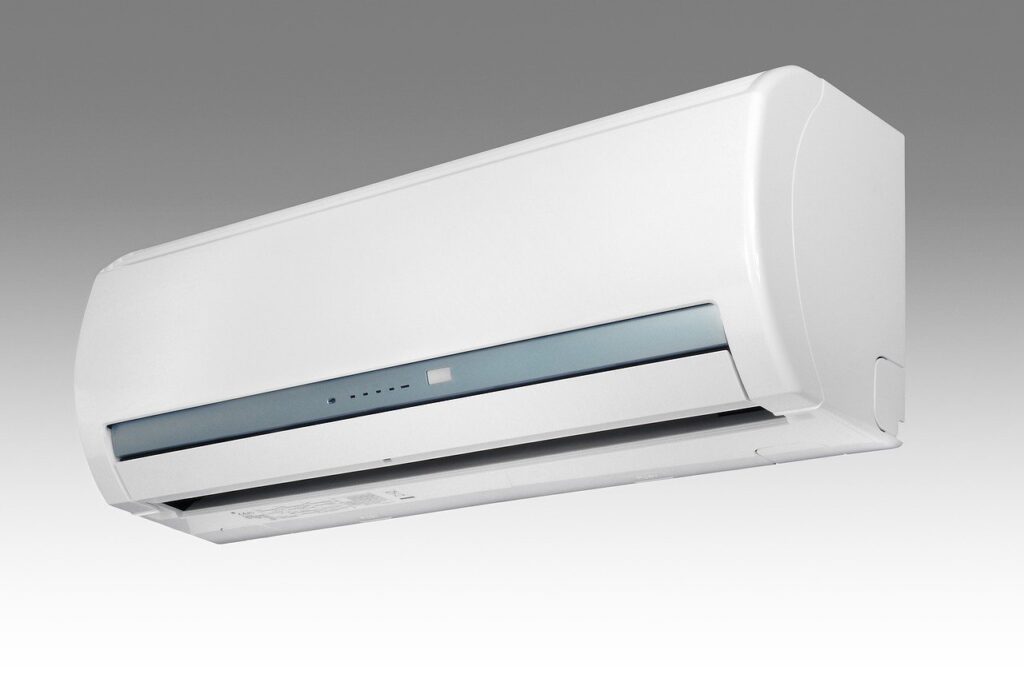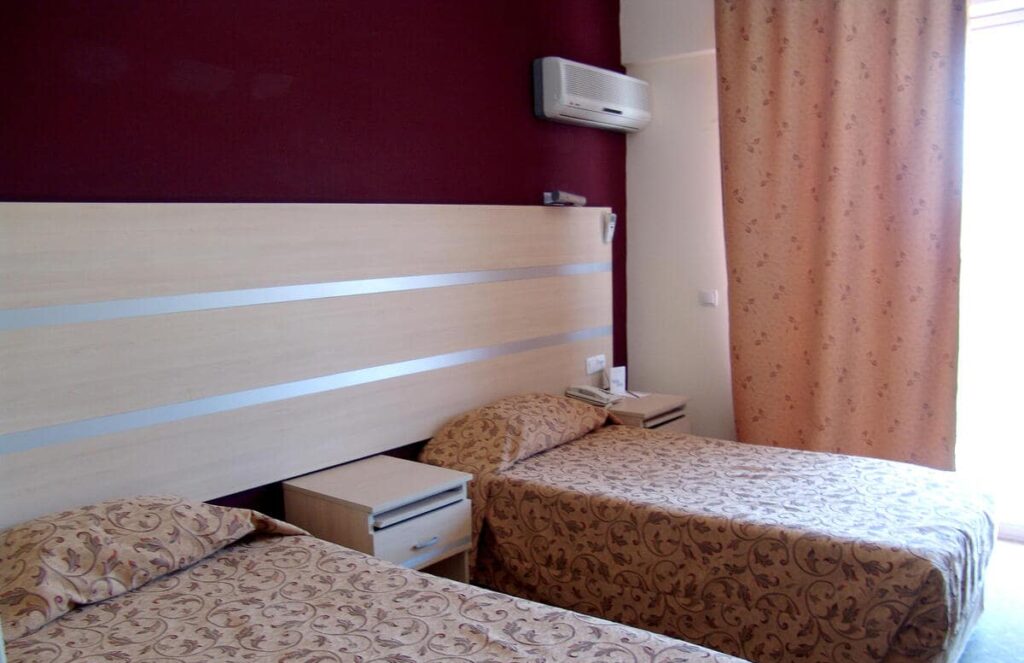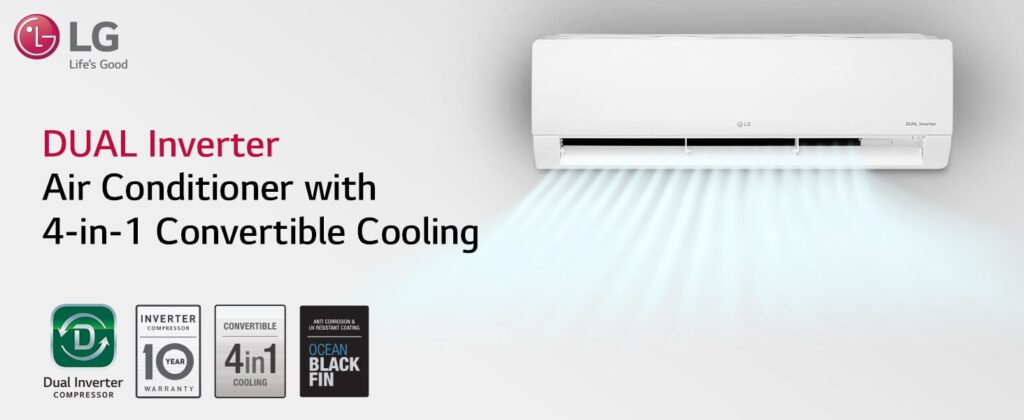
Pondering over inverter AC Vs non inverter AC?
You’re on the right page. When you’re planning to buy a new AC, inverter vs. non-inverter is one of the first things you need to consider.
In fact, this question is perhaps even more critical than window vs split AC as it is going to impact your pocket.
We are answering the top 6 commonly asked questions about inverter AC vs non inverter air conditioners here so you can be well informed for your next AC purchase.
- Inverter AC Means What? What is Inverter Technology in AC
- Non Inverter AC vs Inverter AC: Which is Best?
- Comparing Inverter AC Benefits with the Disadvantages of Inverter Air Conditioners
- Inverter AC vs Normal AC: Do Non Inverter ACs have Advantages Too?
- Can Inverter ACs Run on Inverter?
- Inverter Air Conditioner vs Non Inverter 5-Star AC: What are the Differences?
Inverter AC Means What? What is Inverter Technology in AC


Note: This section deals with the science of inverter technology in AC and explains how inverter AC works. Feel free to skip to the next section if you want.
There are considerable differences between inverter and non-inverter ACs when it comes to technology.
While the core mechanical principle is the same in both ACs, the components they use to leverage it are slightly different. So, to understand the differences properly, you need to understand this core principle first.
The mechanical principle ACs use is that when a liquid evaporates into a gas, it increases its temperature or “absorbs heat”. The opposite is true too. When a gas’s temperature lowers or it “releases pent-up heat”, it changes back into a liquid.
A substance that excels in absorbing and releasing heat while changing its form is called a Phase Change Material.
Air conditioners use this core principle to cool the air in your room with the help of a Phase Change Material. The Phase Change Material they use, of course, is the refrigerant gas.
Here’s how the process looks.
- The refrigerant in its liquid state flows in the coils which are located inside the room (the indoor portion of the coils of window AC and indoor unit of split AC).
- The AC’s fan then sucks in the hot air and blows it over the coils containing the cold, liquid refrigerant.
- The air becomes cool and is blown back into the room while the refrigerant absorbs the heat and changes into a gaseous form.
- The conversion isn’t complete, though. As the natural flow takes the refrigerant into the compressor, it is then squeezed even more tightly. This results in its complete conversion to a gaseous state.
- The refrigerant (now fully gas) flows into the coils located outside the room (the outside portion of window AC and outdoor unit of split AC) where it releases its heat into the surroundings.
- Once it releases the pent-up heat, it turns back into a liquid and flows back into the room.
- This occurs in a loop till the room’s air temperature reaches the number you chose on the remote.
The inverter AC technology comes into play during the compressor phase.
Non-inverter ACs use reciprocating compressors. These compressors are like pistons. They move up and down to compress the refrigerant.
Inverter ACs use rotary compressors. They use a circular motion to compress the refrigerant. Dual inverter ACs, by the way, use two rotary compressors.
There are two important things you need to remember here.
#1: There’s no speed component to the up and down motion. It is either up or down. The circular motion, though, can occur at different speeds.
#2: Up and down motion (push and pull) will always consume more force than circular motion. The circular motion requires less force because it leverages centrifugal and centripetal forces.
Non Inverter AC vs Inverter AC: Which is Best?
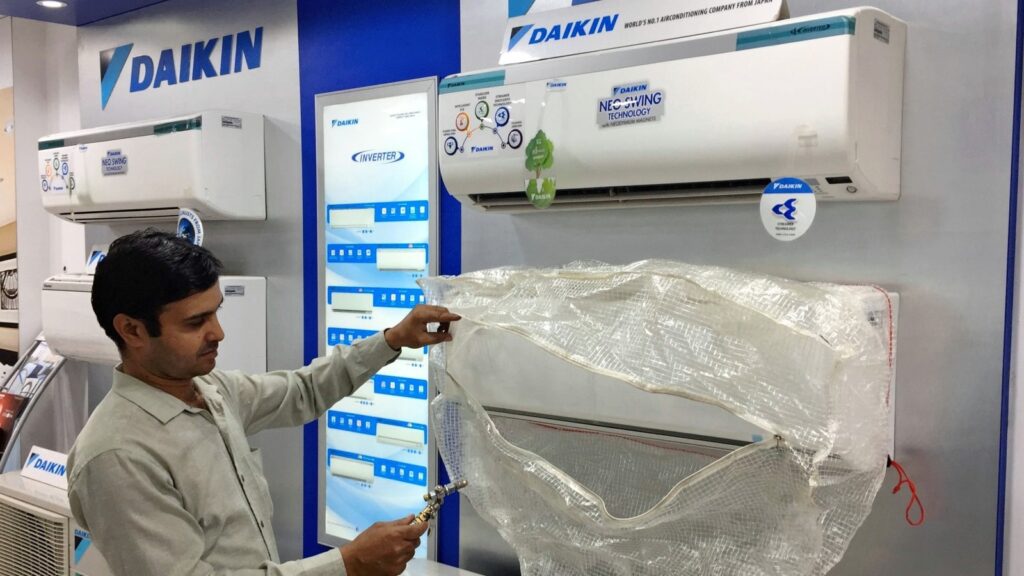

If you read through the science lesson in the previous section, then you must have been the PCMB student in school. It does take some doing, so Kudos!
What all that science boils down to is this: inverter ACs (Variable Speed ACs) can run at different speeds while non-inverter ACs (Fixed Speed ACs) have just one speed.
The practical implication of this ability is that inverter ACs are more energy-efficient than non-inverter ACs.
Being more energy-efficient, your inverter AC will consume less power to cool your room to a certain temperature than a non-inverter AC. This will not only help bring down your power bills and save you a lot of money but it will also help the environment.
Durability is another variable worth considering when you’re trying to decide if inverter ACs are better for you than non-inverter ACs.
The circular motion of the rotary compressors in inverter ACs causes less wear and tear than the up and down motion of reciprocating compressors in non-inverter ACs.
In the long term, this causes non-inverter ACs to lose efficiency and break down more often than inverter ACs. It all culminates in you having to replace your non-inverter AC much faster than you would have to replace an inverter AC.
So, circling back to the question “is an inverter AC better than a non-inverter AC”, we would say “yes, in more ways than one”.
However, there’s a catch – TIME.
Comparing Inverter AC Benefits with the Disadvantages of Inverter Air Conditioners


If you compare inverter and non inverter ACs objectively, you’ll find that the advantages of Inverter ACs are many but they aren’t completely flawless.
Of all the disadvantages of inverter air conditioners, the one that stands out most is COST.
Their higher cost is the only reason why people choose non-inverter ACs over them.
Inverter ACs are almost always several thousand rupees more expensive than their non-inverter ACs. If they have a better ISEER value and star rating, they’ll be even more expensive.
However, if you read the previous section, you’ll know that inverter ACs save you money in the long term through lower power bills and a longer lifespan.
So, at which point will the inverter AC recoup the extra money you paid to buy it?
Normally, it takes about 5 to 7 years for this to happen.
However, it depends entirely on how often and how long you use your inverter AC. The more you use it and the lower the temperatures at which you use it, the quicker you’ll recoup your investment.
With the right maintenance, you can even prolong the life of an inverter AC which will lead to even more savings.
Inverter AC vs Normal AC: Do Non Inverter ACs have Advantages Too?
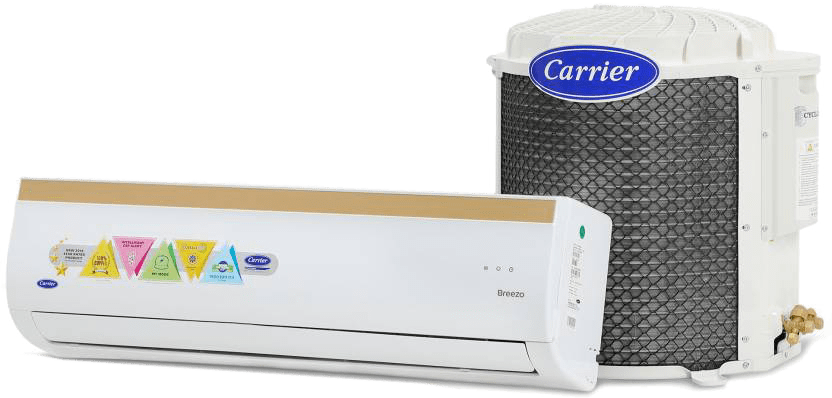

There aren’t many advantages of non-inverter ACs, especially when compared to inverter ACs.
However, as we’ve explained already, the one benefit of going for a non-inverter AC is that it is cheaper.
For example, if you’re buying an AC for a room that isn’t used very often (consider a room that doesn’t receive a lot of sunlight or a room that is empty most of the time), then it will only be on for a little bit of the time.
Since it won’t be run very often or very long, the savings you’ll get from an inverter AC will take that much longer.
In fact, to recoup the extra money you spend to buy an inverter AC, it might take up to 15 years!
In such scenarios, it is much better to save money at the very beginning instead of waiting years for it to come back to you.
Inverter Air Conditioner vs Non Inverter 5-Star AC: What are the Differences?
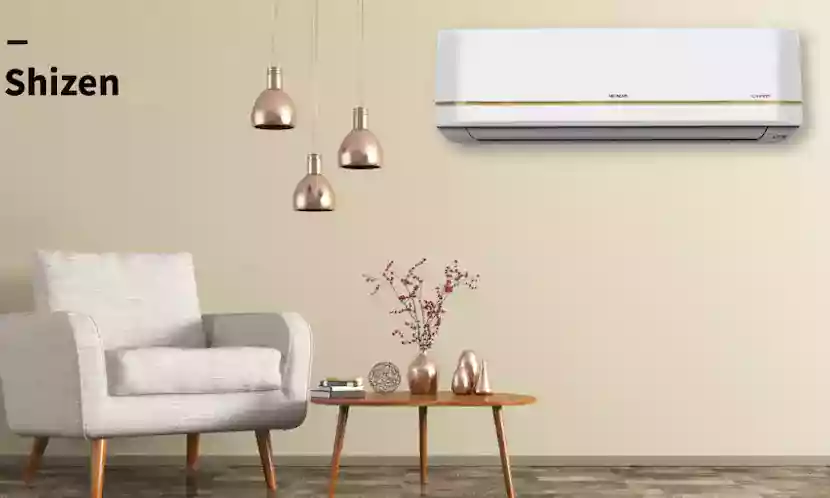

The whole question of can an inverter AC run on inverter is borne out of a common misconception.
People who don’t understand inverter technology in ACs think that these ACs are called “inverter ACs” because they can run on inverters.
Nothing can be more wrong.
The word “inverter” in inverter ACs refers to the type of technology they have instead of their compatibility with inverters.
However, even though most people ask this question because of a mistake, the question is still relevant.
Can you really run an inverter AC on an inverter?
The answer depends on the capacity of your inverter and the state of the room when the power cut happens.
A 1-ton inverter AC will need an inverter of at least 1 KVA capacity. However, realistically, you’ll be better off with a 1.5 KVA inverter because you’ll need other things in your home such as fans and lights to be on too.
Similarly, for a 1.5-ton inverter AC, you should at least have a 2.0-KVA capacity inverter.
The backup capacity requirement, though, also depends on the state of your room.
For instance, if your room has already cooled and your 1.5-ton inverter AC is only maintaining that temperature then it won’t need to draw upon 1.5 KVA and will probably run at the 1.0-KVA level.
Similarly, a 1-ton inverter AC doesn’t pull on the full 1KVA power when it is only maintaining the temperature in the room.
The best would be to, of course, go for convertible inverter ACs that can be used at various capacities (20%, 40%, 60%, and 80% in addition to 100%). A 1.5-ton AC running at 60% for example would only need about 0.9 KVA.
The reason for this is that if the inverter AC is not a convertible AC, then it would automatically start pulling more KVA when the room gets warmer.
The inverter AC’s increasing demands can cause can the inverter to trip, especially with other appliances in the house.
What Are the Differences Between 5-Star AC And Inverter AC?
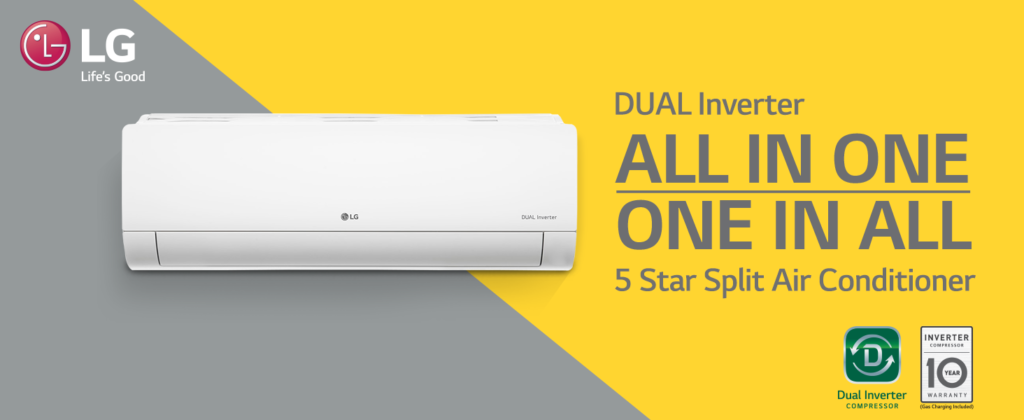

So, we’ve already answered the inverter AC vs on inverter AC debate above. What we haven’t done is taken care of the inverter air conditioner vs non inverter 5-star AC debate. In this section, we’ll settle everything once and for all.
Both the 5-star rating and the inverter technology are aimed at the same target – energy efficiency.
Although they are aimed at the same target, there are plenty of differences between them because they are, essentially, different things.
The 5-star rating is the overall assessment provided by the Bureau of Energy Efficiency (BEE) on how much energy an AC consumes to cool a room to a pre-defined temperature.
Inverter technology, however, is the technology that an AC uses, as we explained in the first section of this article.
In a way, you can say that the 5-star rating is an evaluation of the inverter technology in an AC.
This is an important distinction because it means that you can get a 5-star inverter AC!
Whether you should or not is a different question. The reason again is the cost.
- An inverter AC is more expensive than a normal AC.
- A 5-star AC is more expensive than a 4, 3, or 2-star AC.
- So, a 5-star inverter AC is going to be the most expensive option available to you within a particular tonnage.
In fact, it is possible that a 5-star inverter AC of 1.5-ton capacity will be more expensive than a 2-star non-inverter AC of 2.0-ton capacity.
However, no AC will save you more money in the long term than a 5-star inverter AC. To unlock those savings, though, you’ll have to run the 5-star inverter AC round the clock for the next 5 years because of the exorbitant initial cost.
Therefore, if you don’t expect that kind of usage then you’ll be better off buying a 3 or 4-star inverter AC. It might even be better to buy a 5-star non-inverter AC but you’ll lose out on the improved durability that inverter technology provides.
Personally, I would go for a 3 or 4-star inverter AC but you can make up your own mind there.
If you do need help choosing a particular model, we have guides for both the best window air conditioners and split ACs. These guides contain both inverter and non-inverter ACs spanning various BEE Star and ISEER ratings.
Contents


